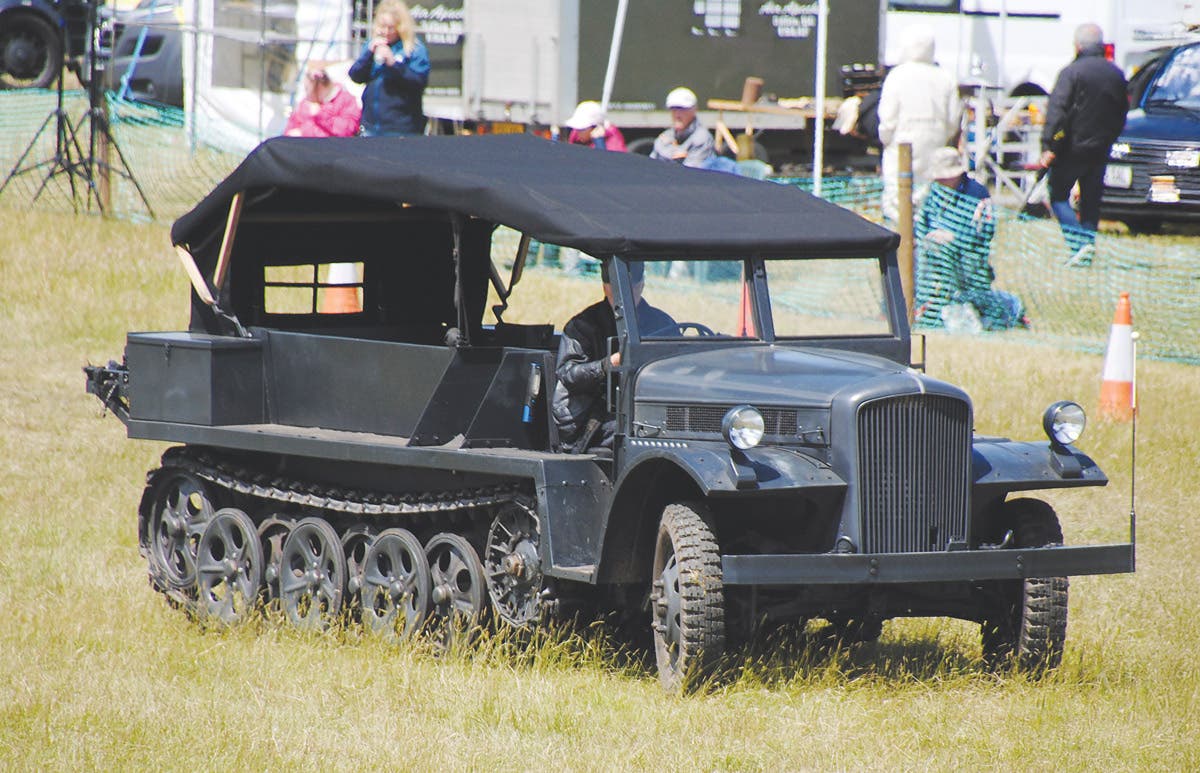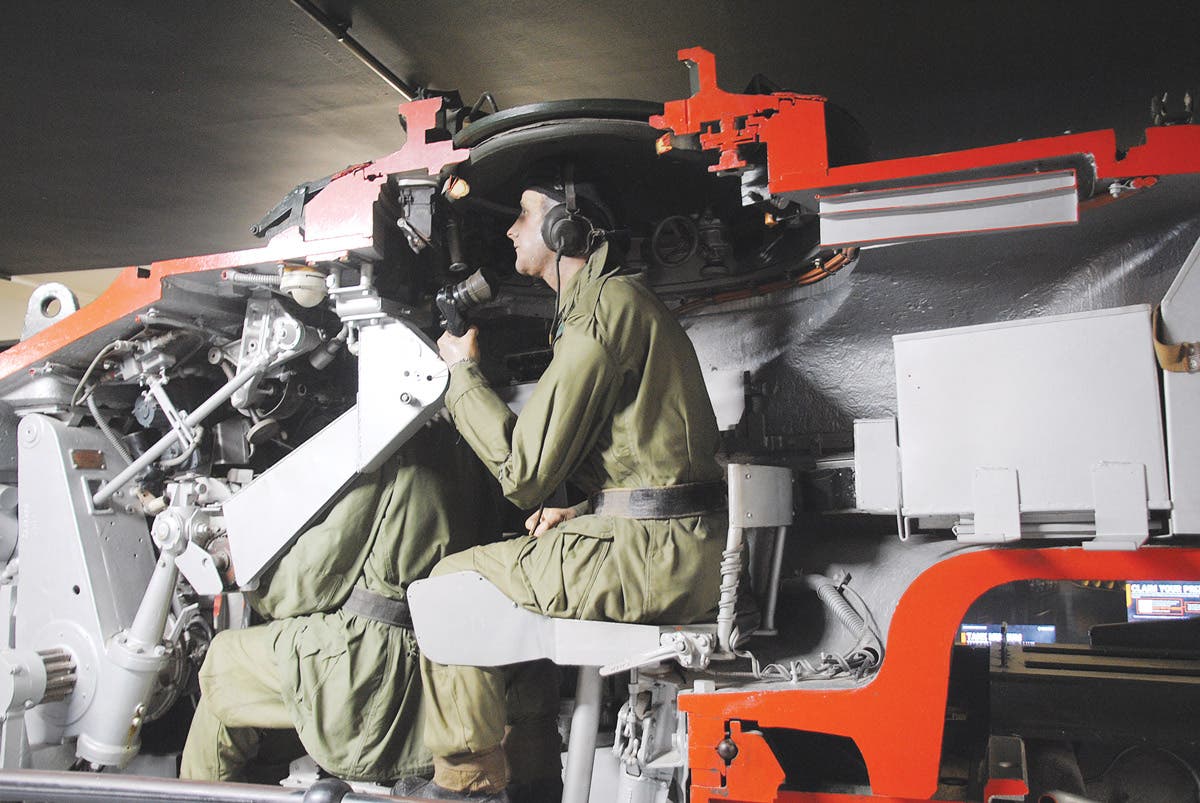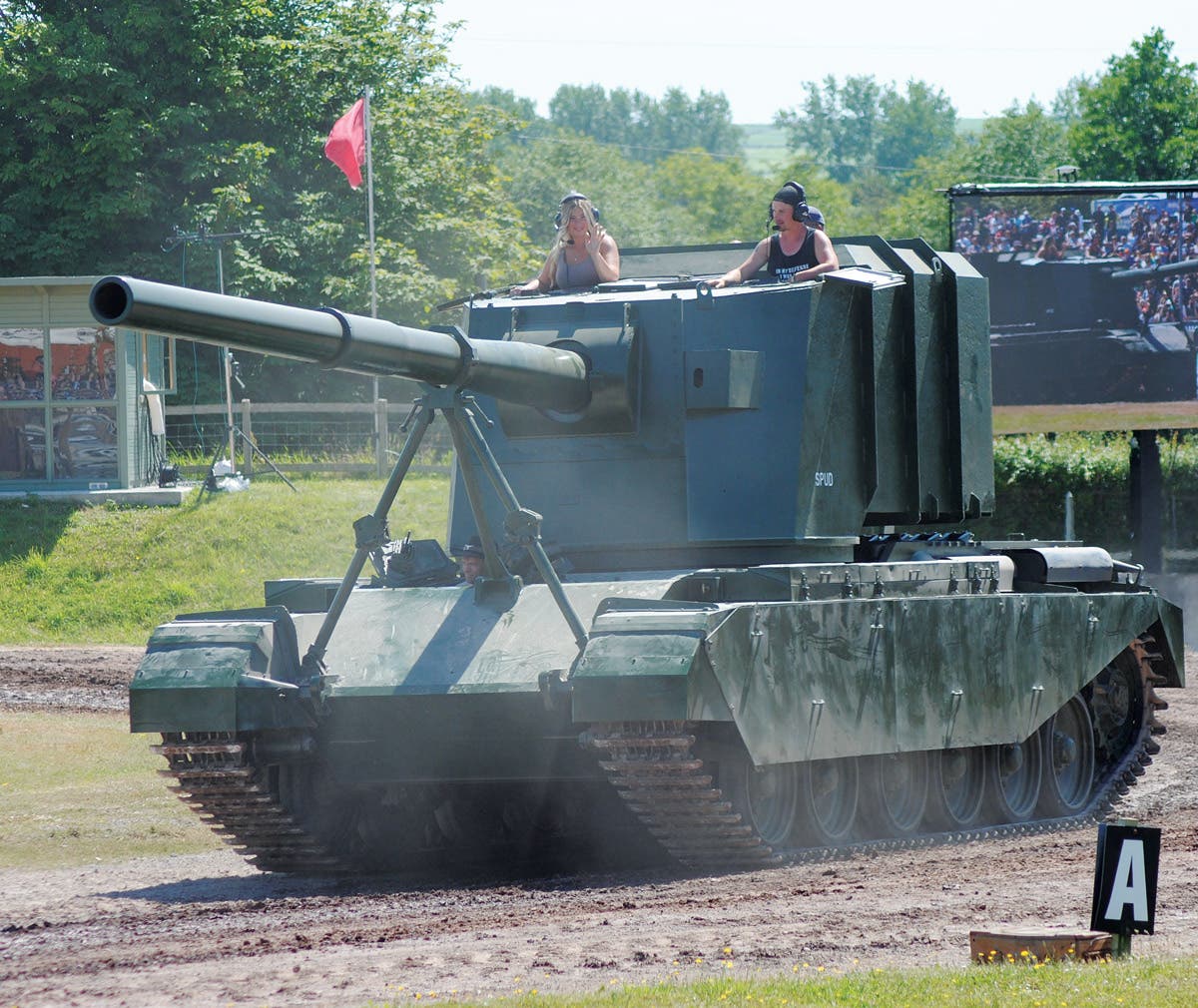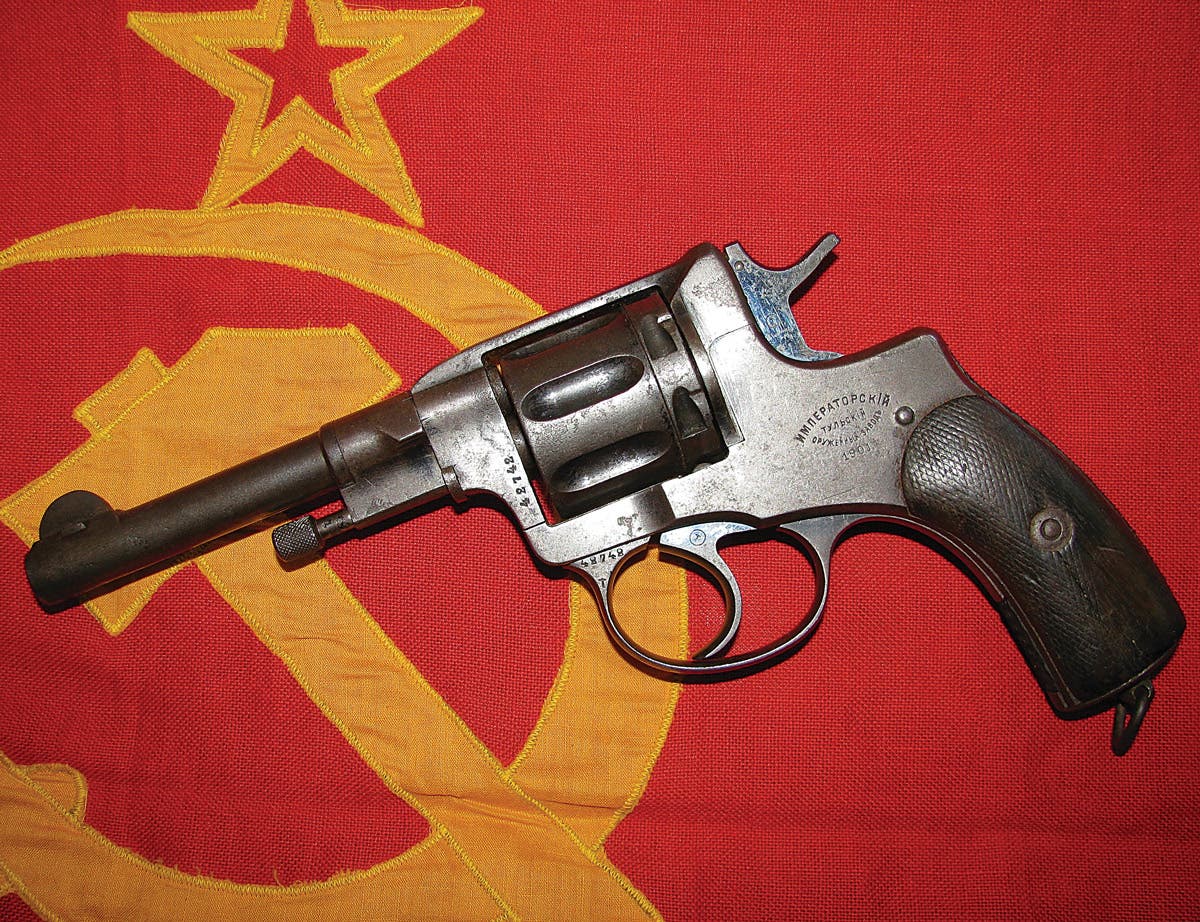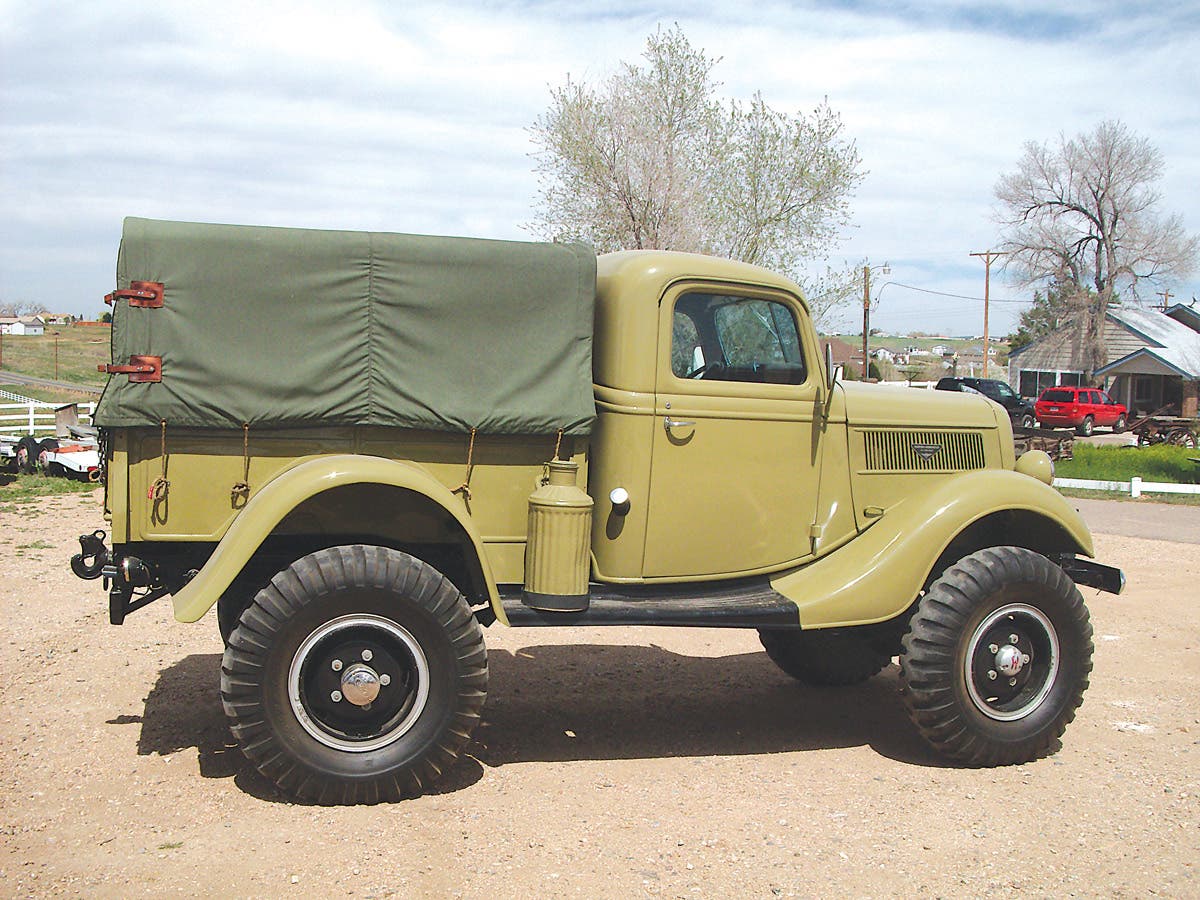Dubbing a Deuce: The REO M35
The M35, in all of its incarnations, is still serving worldwide today.
My dad, who was in the Marines during WWII and the Korean Conflict, and was a sergeant during the latter, gave me two pieces of advice about being in the military: One, never volunteer; and two, never volunteer. He also told me that if someone was a master chef in civilian life, for example, the Army would probably train him to be a truck driver… or vice-versa. Since I had always loved jeeps and trucks and was mechanically minded, he seemed to think it likely that I would be assigned as a cook.
In the late 1960s, with the Vietnam War growing grimmer every week, it was also likely that any healthy 18-year-old who didn’t have money for college would be drafted. If so, and according to my dad, that kid would have little choice about a specialty or assignment. Therefore, my decision to join up had nothing to do with serving in a war that even my father – with a Bronze Star and several Purple Hearts — didn’t believe in.
Those who did serve in the U.S. military during those times, whether willingly or not, may recall hours of aptitude tests in Basic followed by a five-minute interview with an officer who decided your future assignment. This decision was supposedly based on your tested aptitudes, but was more likely influenced by whatever your particular branch of the service needed in the way of warm bodies that day.
After listening to what I liked to do, was good at doing, and hoped to do by way of serving my country, he said I was “too smart to be a truck driver.” He did think, however, I might be useful with tanks. He added that, “While I could ask for duty in transport, I would probably be rejected and end up chasing Charlie through the boonies.” This didn’t make any sense to me... if I was “too smart” to drive a truck, then why would the government waste my brainpower? But one doesn’t ask those kinds of questions in basic training. I suppose some hoo-rah type might say that I cheated Uncle Sam out of what may have been a reasonably good tank jockey, but I did so in innocence by forgetting once —and only once — my father’s advice.
We were out on maneuvers, and a REO M35 — an old gasoline-powered unit — wouldn’t start. Nobody who was “qualified” could charm the beast to life. I stupidly said to a buddy that the engine was flooded and any donkey with a nose would know it. Our sergeant overheard my remark and roared, “FIX IT, SMART-ASS!” I not only fixed it by simply holding the gas pedal down while cranking the engine to give it plenty of air, I also drove the truck back to base... which is how I became a hero.
There have always been historical military vehicle enthusiasts; and some folks in ancient Egypt probably bought old war chariots at pharaoh’s surplus sales, however, after WWII many vets who had frozen in jeeps and/or busted their butts on the hard, wooden benches of CCKWs wanted nothing further to do with military vehicles, though thousands were purchased for work or farm use. For example, up into the mid 1960s, a local cement company ran a fleet of WWII International M-5-6s outfitted as mixers. It was also during the mid ’60s that the U.S. public began to grow aware of recreational four-wheeling.
Besides Willys Motors (later, Kaiser) civilian jeeps, trucks and station wagons, other U.S. automakers got into the 4x4 game with offerings such as the Ford Bronco, Chevrolet Blazer, Dodge Ram, and the I.H.C. Scout. There were a few individuals who drove British Land Rovers, and Japan peacefully invaded with the Nissan Patrol and Toyota Land Cruiser. There was also a growing interest in historical military vehicles, many of which were WWII and Korean War era jeeps, such as the Willys MB, Ford GPW, Willys M38, and M38A1. Dodge WC 3/4-ton trucks were also popular. And even though they were still in active military service, many people were beginning to discover the excellent Dodge M37.
Of course, these are only my observations based on what was happening in my part of the country, and it wasn’t until the late 1970s that I discovered there was a Military Vehicle Collectors Club (now the Military Vehicle Preservation Association). Again, based on my recollections, most hobbyist HMVs were small in 1950s and 1960s with the majority being jeeps. Larger vehicles, such as the Chevrolet G-506, Dodge WC-62 and WC-63 1-1/2-tonners, and “deuce-and-a-halfs,” like the venerable GMC CCKW, International M-5-6, and Studebaker US-6, were mostly still earning their keep as work trucks. (By the way, the terms “deuce” and “deuce-and-a-half” were apparently coined during the Korean War era and don’t seem to have been used in WWII.)
The same applied to these trucks’ larger brothers, such as the Autocar U7144T, which were expensive gas-hogs, even in the days of 25-cents-a-gallon gas. These big boys of WWII were usually found moving houses or hauling rocks in quarries. While a few post-WWII deuces, such as the GMC M211 and REO M35, were starting to show up in fire and forestry departments, they hadn’t as yet — at least in my area — become widely popular with HMV hobbyists. Likewise, the monster truck market buying these deuces (usually the REO M35) mainly for their axles, was still a decade away.
The historical military vehicle hobby is dynamic, reflecting the diversity and ever-changing interests of its members, and it seems as if deuces, especially M35 style deuces, have become some of the more popular HMVs. This is probably due to the sheer numbers of these trucks available, many going for less than the price of good but unrestored jeeps. Even with today’s fuel prices, there seems to be a feeling that one can get more bang for their HMV bucks with a deuce.
As with jeeps, it’s impossible to write a truly comprehensive article about the M35 in the space of a few magazine pages, but while many articles have been written about individual M35s, their variants, restorations, service, maintenance, and modifications, let’s take a general look at these trucks, beginning with a brief history of the company that first designed and built them.
In 1897, a gentleman named Ransom Eli Olds founded the Olds Motor Works in Lansing, Mich., though his first factory was built in Detroit. Olds’ engineers designed 11 automobiles, including several electric models. One vehicle was a small, open, buckboard-type car with a single-cylinder, water-cooled, four-cycle, rear-mounted engine. This car also had a distinctive curved dashboard. (“Dashboards” in those days were for preventing the splash — or “dash” — of mud and water from soaking the driver and passengers.) This car was logically nicknamed the “curved dash” Olds.
In March 1901, a fire destroyed most of the factory, and the only surviving vehicles were the little curved dash models. Ransom Olds rebuilt the plant and poured all his remaining resources into the curved dash vehicles, thereby committing his company to the production of a small and fairly inexpensive car. The curved dash Olds soon became popular with the public, and inspired the hit song, Merry Oldsmobile.
In 1904, Ransom E. Olds became involved in a dispute with investors and quit to start a new car factory in Lansing. Because the name Oldsmobile belonged to the Oldsmobile Company, Ransom used his initials, R.E.O., as a trademark for his new vehicles and the REO Motor Car Company. The name was pronounced “Reo,” as in Rio Grande, though the letters varied over the years, sometimes all capitals, others with only the R capitalized. Incidentally, the 1970s rock band, R.E.O. Speedwagon, named after a very popular REO truck of the early to mid-1900s, was pronounced “R-E-0.”
Like most new companies, REO struggled at first. In 1905, only 864 cars were built compared to Oldsmobile’s 6,500. But, in 1908, REO sold 4,105 vehicles compared to Oldsmobile’s 1,055. Later that year, Oldsmobile was acquired by William Durrant and became part of Durrant’s new General Motors empire. REO did well during the 1920s, branching into the truck market, though the company name was tainted by affiliations with the Ku Klux Klan, which was rumored to virtually run the factory. There is some evidence that Ransom Olds supported Klan leaders, possibly to quell labor disputes, one of whom was presented with a REO automobile by “men of the KKK.”
In any case, like most U.S. companies, REO was hard hit by the Great Depression of the 1930s and stopped building cars in 1936, focusing on truck production instead. A year later, following a strike at the plant, REO declared bankruptcy, but was rescued in 1939 by a Reconstruction Finance Corporation loan and a government contract to produce trucks.
WWII brought new prosperity to REO in the form of more defense contracts, though Reo built mostly non-tactical vehicles. After WWII, REO built many trucks for Lend-Lease, most of which went to Turkey, Pakistan, and Middle Eastern countries, where many can still be found today. One interesting military contract was for a 100 trucks that used high-frequency electric motors to drive the wheels, incorporating a six-cylinder gasoline engine to power a generator.
It was also during these post-WWII years that REO entered into a competition between REO, Studebaker, and General Motors to design a new 2 1/2-ton tactical truck to replace the U.S. military’s fleet of ageing GMC CCKWs, I.H.C. M-5-6s, and Studebaker US6s. General Motors wanted to hang on to the deuce-and-a-half market, and even though the military seemed to favor REO’s design — first called the M34, then the M44 Series — G.M. poured lots of its own money into updating its excellent CCKW, which became the M211 and its variants.
The M211, though more modern and sophisticated in many ways than REO’s concept, including an automatic transmission, may have been ahead of its time and was somewhat problematic. While both the REO and G.M. trucks were accepted for production, the REO M35, with its more powerful REO Gold Comet 331-cid engine and five-speed manual transmission, proved to be more durable and dependable, probably due to its relative simplicity, and went on to become one the most successful military vehicles in the world. The M35, in all of its incarnations, is still serving worldwide today, while production of the GMC M211 ceased in 1955, though the existing trucks continued to serve into the 1970s.
Despite the success of the M35, REO’s fortunes steadily declined during the 1950s. Even though REO had designed one of the best military trucks ever made, the U.S. government awarded contracts to many other companies to build it. The first of these was Studebaker, which had to buy engines from REO. Insult was added to injury when the engine contact was awarded to Continental — with REO being forced to license its design — becoming the COA 331. By the mid-1970s, REO was out of the deuce game. Over the years, the M35 series, or G-742 family, was built by no less than 10 companies, including Studebaker, Kaiser Jeep, Curtiss-Wright, and AM General.
In the late 1950s, the U.S. military became interested in tactical vehicles that could run on many different kinds of fuels, including gasoline, diesel, and jet fuel — even engine oil mixed with antifreeze. REO submitted designs for such multifuel engines, but the contract was awarded to Continental. While these engines could indeed run on just about any flammable liquid, the preferred fuel was diesel.
REO had enjoyed a bit of new prosperity during the late 1940s by building power lawn mowers. Indeed, by 1950, REO was the largest manufacturer of power mowers in the world, with sales of almost $10 million and 500,000 units produced in 1951. However, REO failed to recognize that mower design was changing from the reel-type units it built to rotary blade models. In 1953, REO finally came out with a rotary mower, but it was a poor design and the lack of one little washer cost the company 5,000 replacement engines. This was blow from which it did not recover.
In 1954, REO sold its mower division to Motor Wheel Corp. of Lansing, which continued the REO name. In 1963, Motor Wheel sold its REO line to Wheel Horse Products of South Bend, Ind., which kept the REO name for several years, introducing a snowblower and a riding mower, along with new rotary models. REO itself merged with Diamond-T Trucks in 1967, becoming Diamond-REO. In 1975, Diamond-REO declared bankruptcy. Except for vintage car and civilian truck enthusiasts, as well as HMV hobbyists, the REO name has been mostly forgotten. Even within the HMV hobby, these memories are fading as newer and younger HMV enthusiasts generally refer to the trucks that REOdesigned as M35s or deuces.
Ransom Eli Olds died in 1950 at the age of 86. Production of the M35 by REO was in high gear at the time. Perhaps it’s fortunate that he didn’t live to see his company fade away.
The U.S. military had learned many things about tactical vehicles during WWII. Even before the war was over, new designs were being tested. These tests resulted in The Conference on Qualitative Requirements For Tactical Type Ordnance Transport Vehicles in May of 1949. There was no doubt that 2 1/2- ton cargo trucks had been a big factor in winning the war: General Dwight Eisenhower said, “The equipment most vital to our success in Africa and Europe were the bulldozer, the jeep, the 2 1/2-ton truck, and the C-47 airplane.” Along with many other types of vehicles, the Conference established new requirements for a family of two-and-a-half-ton trucks.
It might seem odd that REO, which had mainly built non-tactical trucks during the war, was able to submit such an excellent tactical design… maybe they had done their homework. In any event, REO submitted prototype vehicles in 1949 that proved so successful that production of these trucks — was booming within a year. The truck got the nickname, “Eager Beaver,” though no one seems to know who coined it. However, the name may have been too cute for G.I.s, because it didn’t stick for long, surviving mainly on models and toys, such as the Monogram model I’d built as a kid and which first inspired my love of these trucks.
The REO M35 was part of the new postwar family of tactical vehicles, commonly called M-series, and which, due to the lessons of WWII, were standardized in many ways, such as sharing many components. During WWII, vehicle parts inventories had been a logistical nightmare. For example, a Willys jeep used a different generator than a Dodge WC. Likewise, the Dodge used a different generator than a Ford GTB, which in turn used a different generator than a GMC CCKW. Some vehicles had 6-volt electrical systems, while others were 12-volt. Nor did dashboard instruments and switches always interchange, though these were standardized to some degree, along with tail and blackout lights.
In the new M-series, however, many of these components did interchange. Thus, a jeep could use the same generator as deuce. Virtually all M-series vehicles used the same dashboard instruments and switches. Another standardization was that all M-series vehicles had 24-volt waterproof ignition systems. This requirement extended to such things as electric generating units, water pumps, stationary engines, and construction equipment.
Additionally, most M-series vehicles, were designed to accommodate accessory kits, such as for deep-water fording, cold weather heating, and radio operation. It was also deemed practical that shifting vehicles into all-wheel drive should be done by automatic means rather than only, or if at all, by the driver... though years later, the military would rethink this concept because there were problems.




